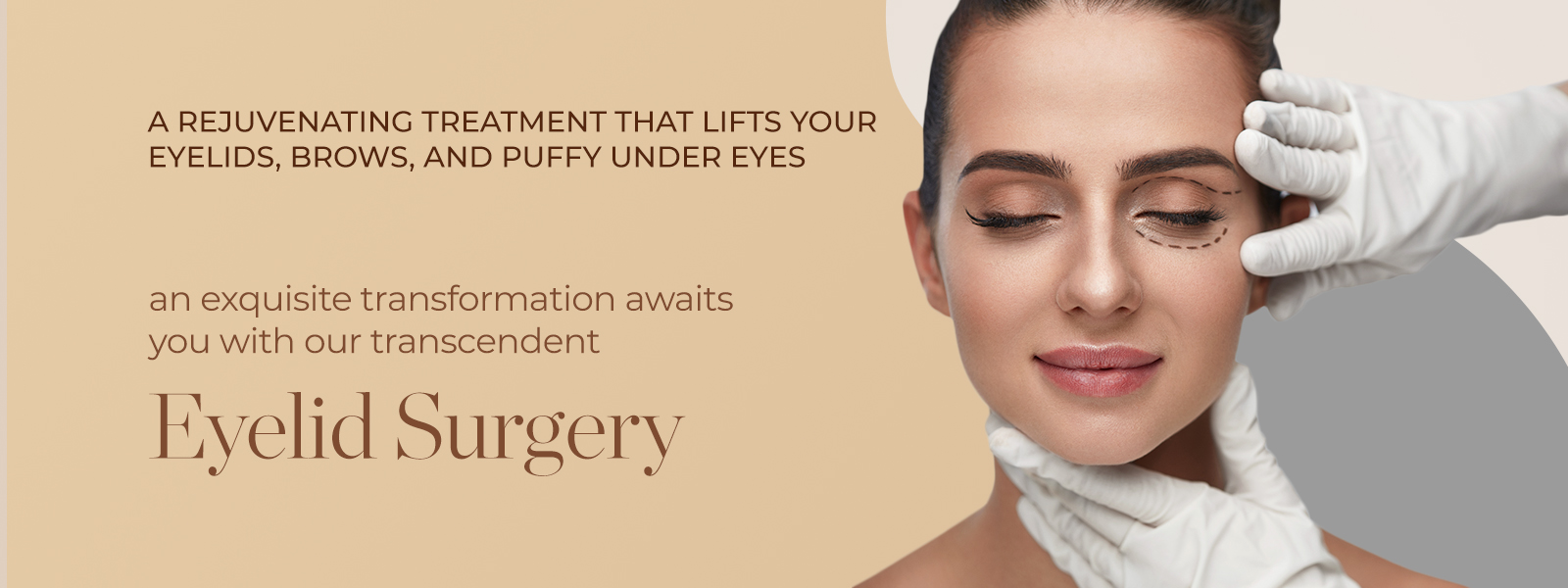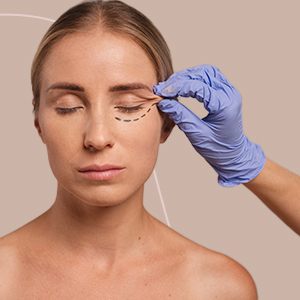

At A Glance
| End Result: | After a few months |
|---|---|
| Socially fit: | After 10-15 days |
| Fit for desk work: | After 2-3 days |
| Surgery: | Local or General Anaesthesia |
| Risk: | Very low |
| Pain: | Low |
| Active exercise: | After 2-3 weeks |
| Inconveniences: | Initial bruising, swelling, puffiness |
What is Eyelid Surgery?
Eyelid surgery, medically known as blepharoplasty, is a cosmetic procedure aimed at rejuvenating the appearance of the eyelids. It involves the removal of excess skin, fat, and muscle from the upper and/or lower eyelids to address issues such as drooping eyelids, puffiness, and bags under the eyes. By tightening the skin and underlying tissues, eyelid surgery can help restore a more youthful and refreshed look to the eyes, enhancing overall facial harmony and reducing signs of ageing. Additionally, this procedure can also improve vision in cases where sagging eyelid skin obstructs the visual field. Eyelid surgery is typically performed on an outpatient basis and can be customized to meet the specific aesthetic goals and anatomical needs of each patient, resulting in natural-looking and long-lasting results.



Why Eyelid Surgery?
It addresses common signs of ageing around the eyes, such as sagging skin, excess fat deposits, and drooping eyelids, which can contribute to a tired or aged appearance. By removing excess tissue and tightening the muscles and skin of the upper and/or lower eyelids, blepharoplasty can rejuvenate the eye area, resulting in a more youthful and refreshed look. Beyond cosmetic enhancement, eyelid surgery can also offer functional benefits, particularly when sagging eyelid skin obstructs vision or causes discomfort. Ultimately, individuals opt for eyelid surgery to restore a more vibrant and rested appearance, boost self-confidence, and address both aesthetic and functional concerns related to their eyelids.
